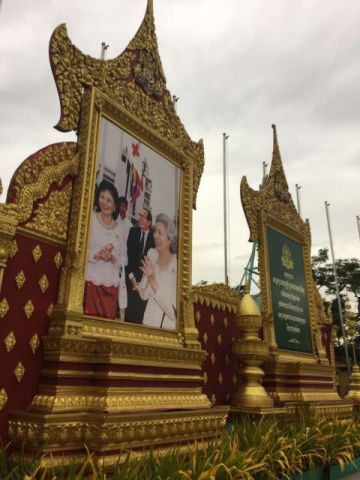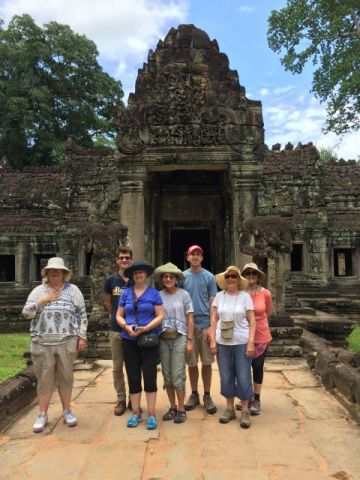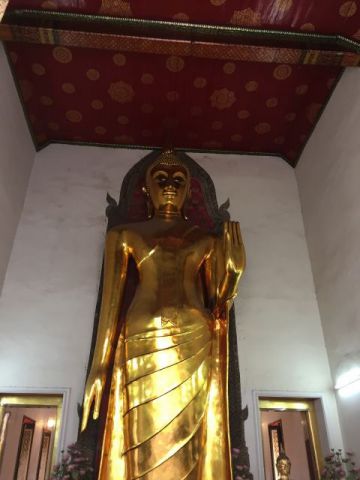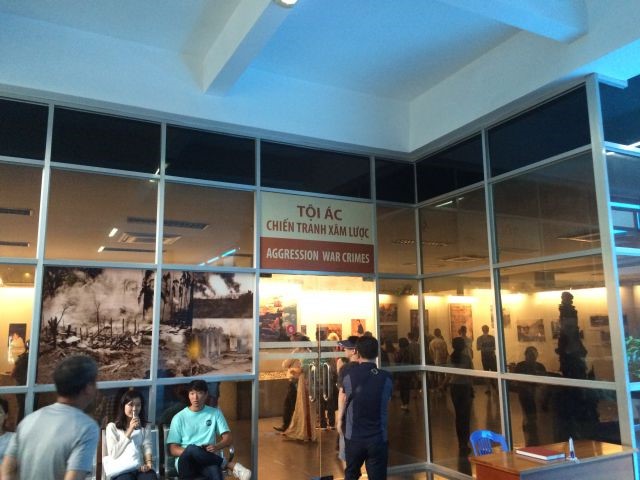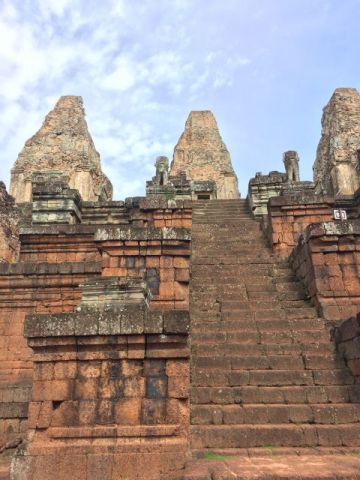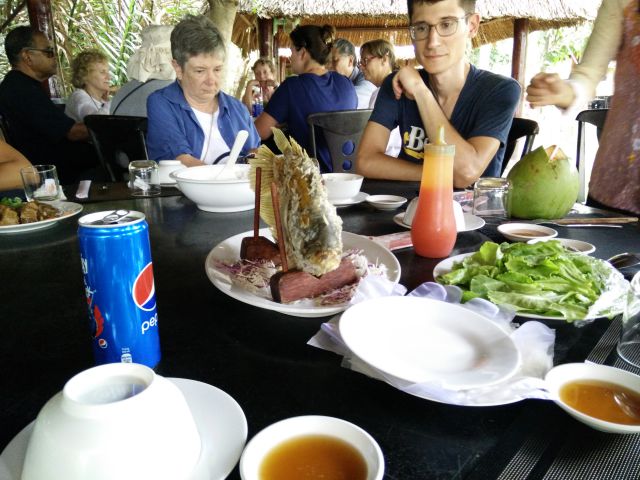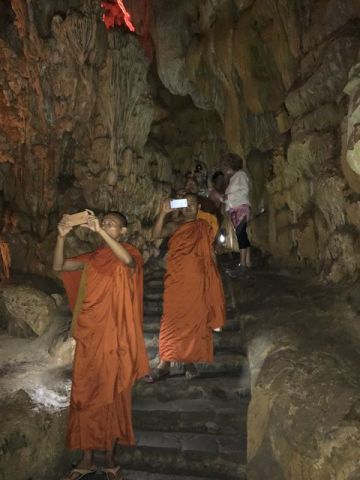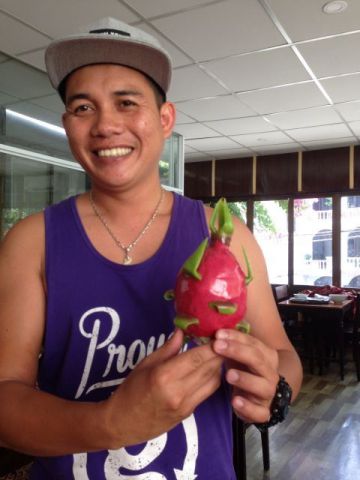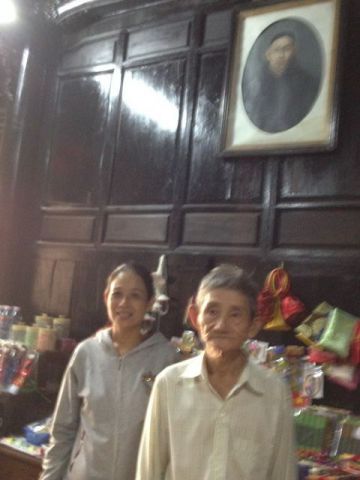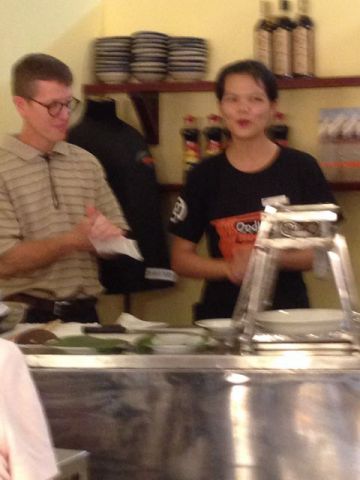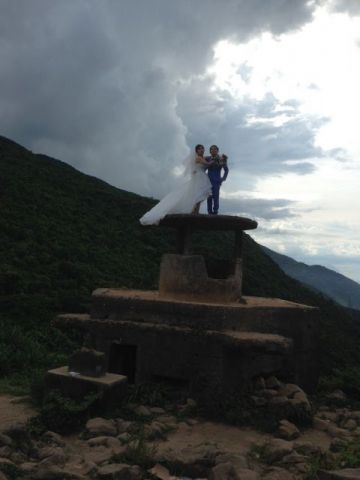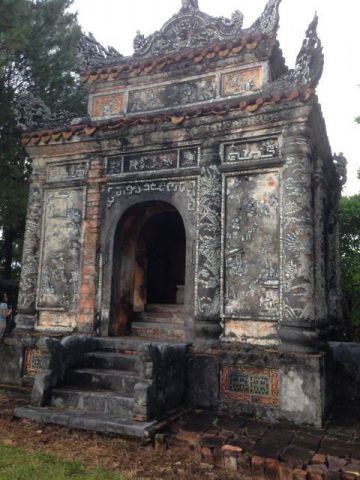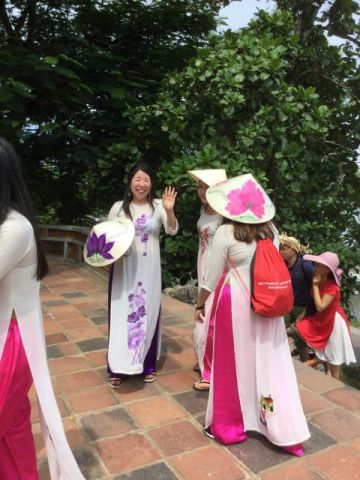Hue and Politics of the Region, July 2, 2017
Hue was a former imperial city and has an impressive citadel and Forbidden City to prove it. The Ngo Mon Gate is the main entrance to the citadel and is an example of Nguyen architecture. We saw the throne room that was very impressive with gilded decorations and lacquered columns. We saw the royal tombs of the emperors and saw the temples where the concubines would spend the remaining days of their lives worshipping the spirits of the deceased emperors. We also had a good lesson on Buddhism from our local guide, who was Buddhist. The pagoda we visited also housed the blue Austin that Thich Quang Duc, the famous monk who immolated himself in the famous picture, had driven to Saigon. This seems like a good time to reflect on the politics of the region.
In World History classes, we teach about how Vietnam has a long history of struggle against its more powerful neighbor, China. The Trung Sisters are still their heroes, embodying the freedom fighter spirit. Despite such figures, Vietnam remained a tributary state of China for hundreds of years. The Hue Imperial Palace reminds me of the Forbidden City in Beijing, and that is probably because of the great cultural and architectural influence China had on Vietnam (whether they want to acknowledge it or not). The religion of Buddhism and political/social thought of Confucianism greatly embedded themselves to become integral to how Vietnam would govern. There are Confucian remnants in the royal graves and temples scattered throughout Hue.
Unlike Vietnam, Cambodia and Thailand historically were more influenced by India than China due to their geographical location. Most of the temples we saw were initially Hindu temples that were later converted to Buddhist temples. Even the ethnic make up (mostly in Cambodia) is similar to India due to centuries of intermarrying. Even the founding tale of Cambodia is about an Indian prince who married the offspring of two dragons, who created Cambodia out of the ocean as a dowry for their daughter.
The Khmer Empire (based in Cambodia) was the ruling center for a while, especially during the construction of Angkor Wat and its other temples. They were able to keep out the Siam and Da Viet (Vietnam) and the Malays until the 15th century, when the empire fell, due to many factors, such as invasion, overpopulation, drought and other environmental factors.
The Kingdom of Siam was able to fare better since it was able to modernize and learn from Britain (recall the Broadway musical, The King and I), while France brutally subjugated and extracted resources from Indochine (Cambodia and Vietnam). People in Thailand still drive on the left side of the road due to this British influence. Thailand also had the fortune of not getting embroiled in the Cold War proxy battles that devastated Cambodia and Vietnam. Instead Bangkok became the recreational capital where servicemen went to relax from the Vietnam War. We all know in general terms what happened in Vietnam during the war by the virtue of being Americans. Cambodia also was affected due to US bombings that gave more support for the Communist Khmer Rouge that are now infamous for genocide against their own people, letting their own people starve to death due to their zeal about collective farming and actively killing most of the bourgeoisie (any intellectuals, professionals, mechanics, even people who just wore glasses) in mass graves like the Killing Fields.
All three countries seem now to be ruled by military-backed dictatorships, with Cambodia and Thailand still maintaining their kings as their figurehead and Vietnam being ruled by a Communist one-party state. We saw loudspeakers announcing government propaganda over rice patties and people having to listen and choosing not respond publicly to any of it in fear of repercussions. They all seem to know innately that freedom of speech is not a valued asset since it might wreak havoc in their hard fought battle to freely earn a buck. All three countries rely greatly on tourist dollars and most people want to abandon farming to become English speakers who participate in the lucrative industry of tourism. For them it seems, economics is more important for now than political ideology.
The Thai were still in mourning for their king lining up in the royal palace to pay respects although he died October 13, 2016. There were many benevolent pictures of the queen mother and father in Cambodia everywhere, especially in its capital, Phnom Penh. Every few blocks from the Vietnam border to Phnom Penh, there were pictures of the current prime minister and his son, who will rule the country for years to come. In these countries that believe in the concept of re-incarnation, maybe in the next life things will be better. As we passed by rows and rows of Buddhist monks out on their early morning begging lines, it makes one realize that maybe Westerners are too quick to judge and want changes too fast.
Study Tour
